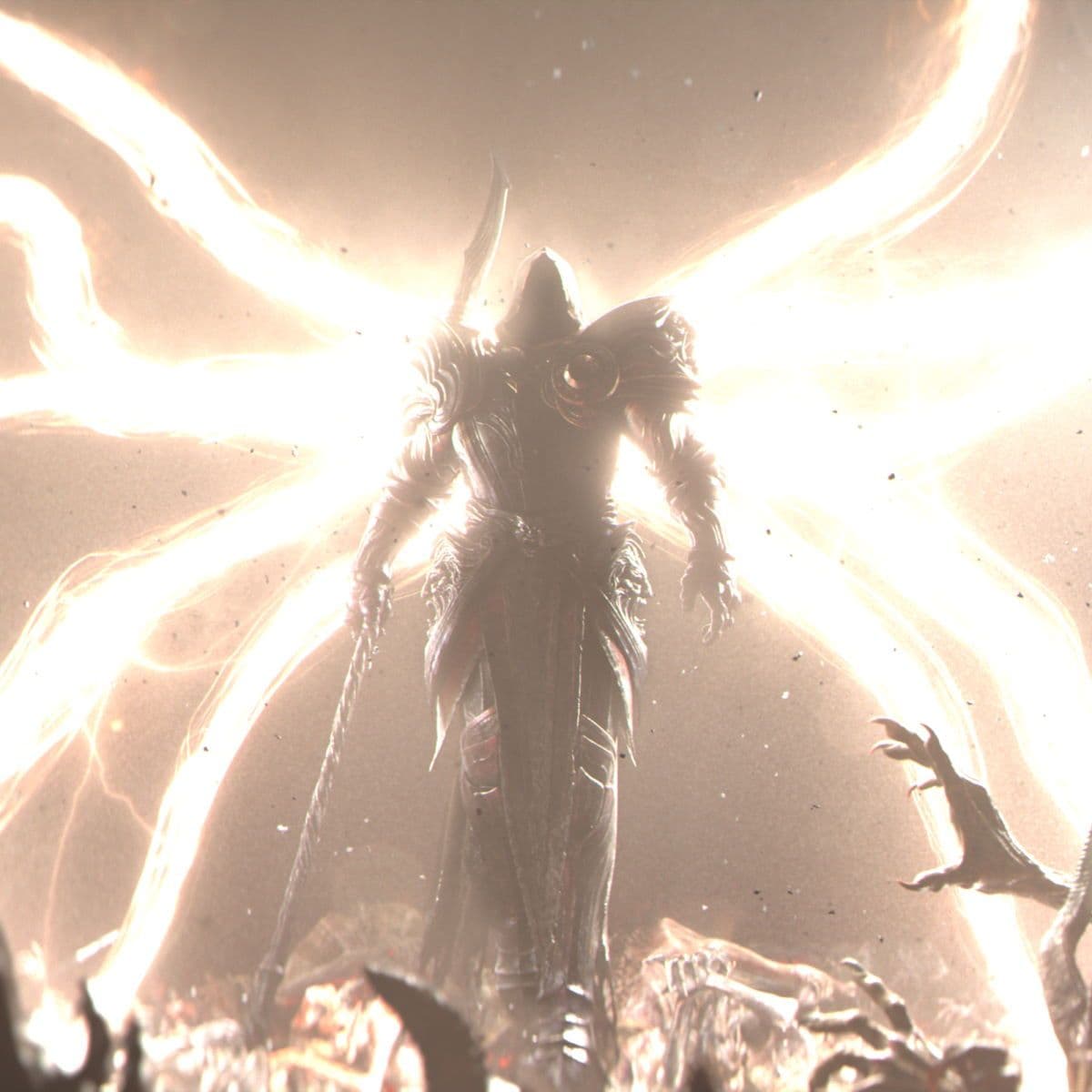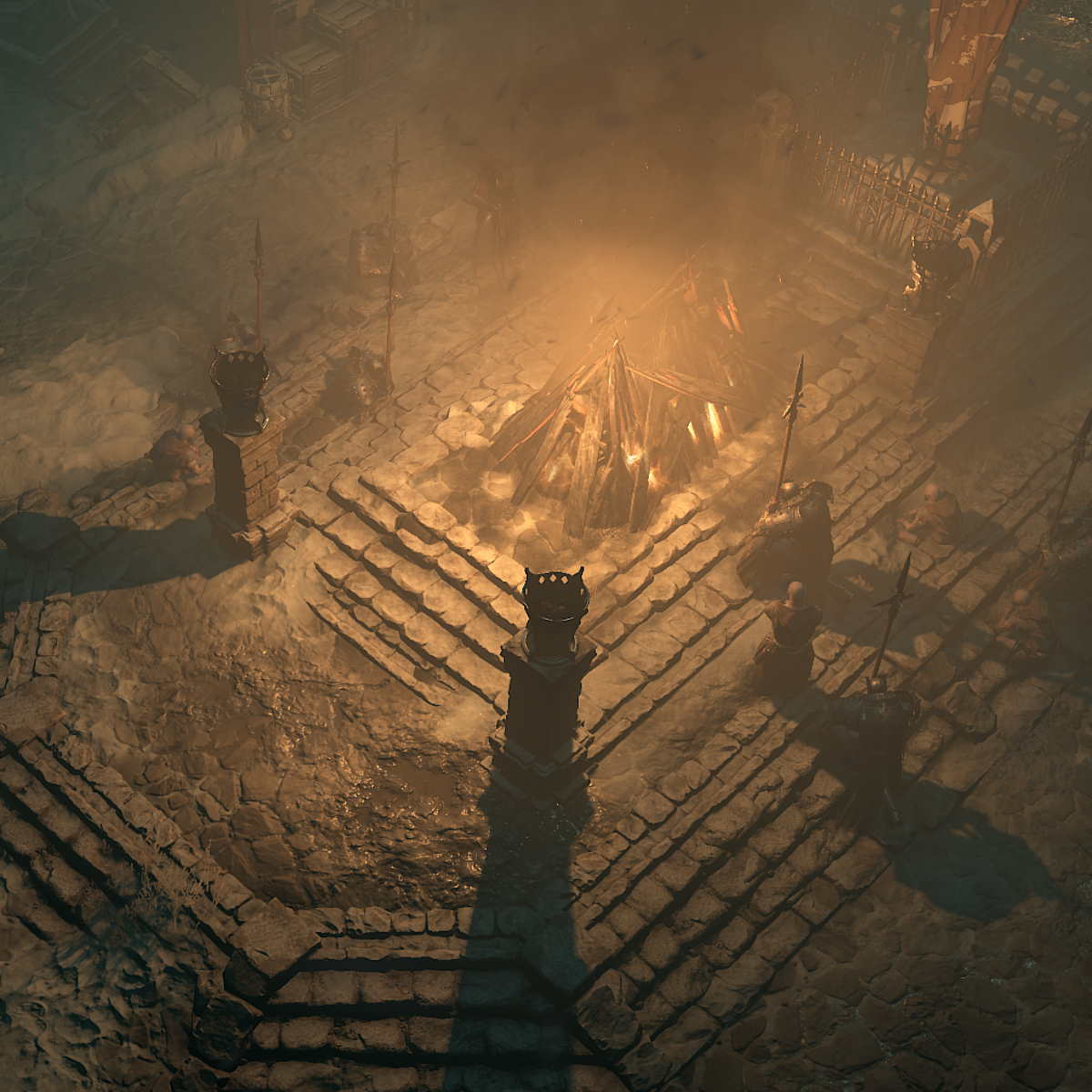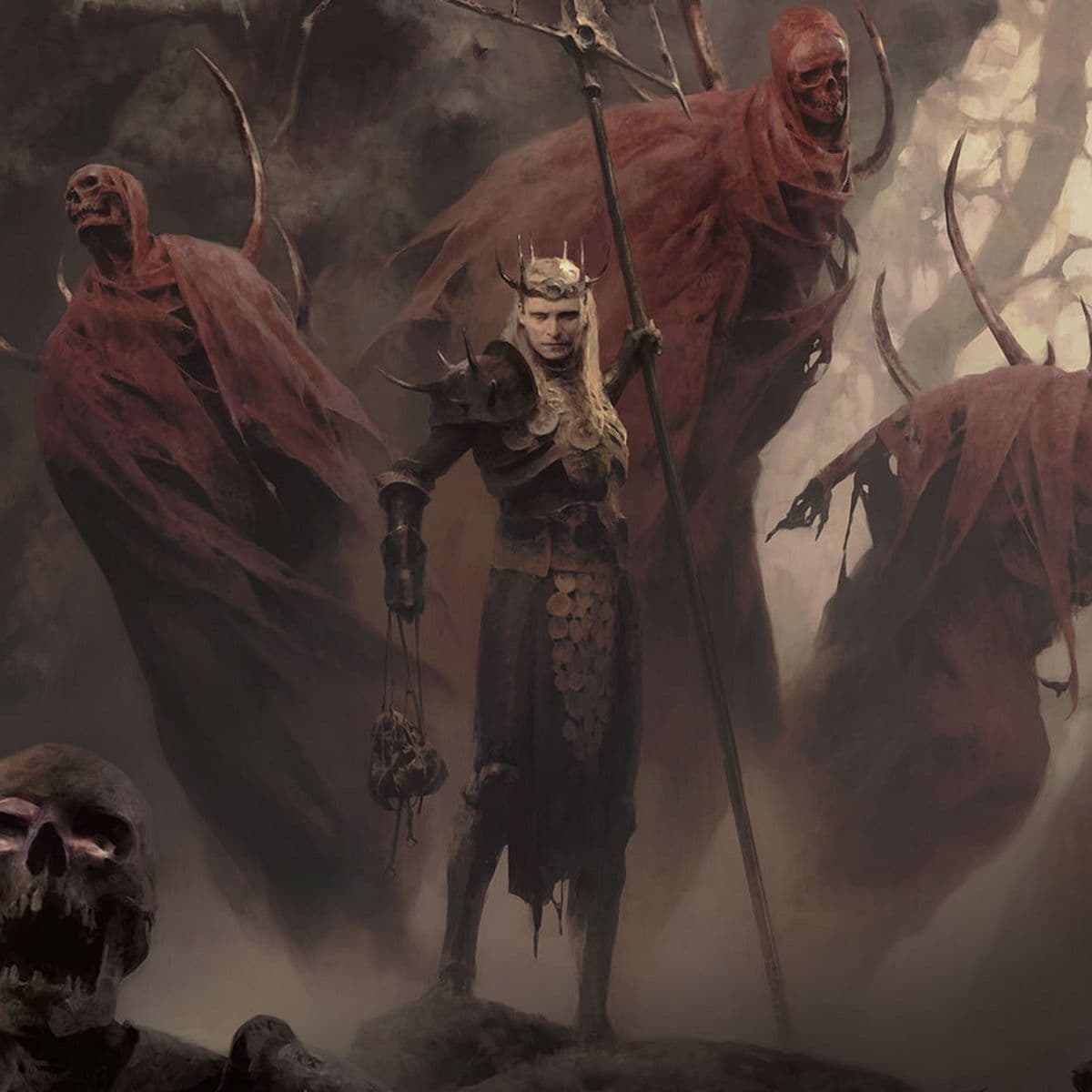Although time with the Diablo 4 beta has helped us acclimatise, there's an awful lot of new and exciting stuff coming with the full game - even more so for anyone jumping straight in from Diablo 3.
To help you get ready for launch, we’ve put together a guide that should serve as a useful reminder of all the new features that will be making an appearance in the sequel.
The World
Diablo 4 has a slight MMO flavour to it, with pre-designed open world maps, and the chance to encounter other players once you reach certain story points.
You can also expect much more impressive weather and day/night cycles, which will have an impact on the behaviour of monsters. Expect more vertical traversal of the world too, along with random events.
There’ll be five core regions to explore in Diablo 4, as well as Hell itself:
Fractured Peaks
Scosglen
Dry Steppes
Kehjistan- Hawezar
Hell
Don’t forget either that you’ll be travelling around the world a little faster than before thanks to your trusty mount.
Strongholds
As well as the towns dotted around the map space, there are also plenty of Strongholds to overcome.
Expect to face an onslaught of resident enemies when you turn up, however. Clear them all out and you’ll get a little loot for your troubles, as well as a new outpost with the usual helpful vendors.
World Bosses
We’ve seen the first World Boss in the form of Ashava the Pestilent. There’ll be three more to encounter too, spread across the open world.
Expect tough fights, requiring many players who are acting with at least some degree of coordination.
World Tiers
The World Tier you’re playing in represents the difficulty level of your game session, and the rewards you receive as a result.
It can be changed whenever you enter the game, or by visiting a World Tier Statue when you’re mid-adventure.
You’ll be able to access World Tiers 1+2 right from the start, but World Tier 3 won’t be available until you’ve made progress in the story and completed a Capstone Dungeon.
To unlock World Tier 4, you’ll need to complete another Capstone Dungeon later on in the game.
Levelling a second character
Bored of the campaign? When you're levelling a second character, you'll be able to take a slightly different approach to hitting the cap:
Your first character must complete the campaign, but when creating your second character you'll have the option to skip it.
If you choose to miss the story the second time around, you'll be started off in Kyovashad at level one.
To level up, you'll need to complete tasks called Whispers of the Dead.
These Whispers will send you all around Sanctuary, completing tasks for a mysterious bit of shrubbery called The Tree of Whispers.
If you skip the campaign, every monster in Sanctuary will scale to your level - just to keep life interesting.
There's one exception. Strongholds have a fixed level floor. They'll either be easier or tougher, depending on when exactly you choose to tackle them.
Helltide
Talk of World Tiers leads us neatly on to the Helltide event.
This event unlocks after you’ve reached World Tier 3, and sees areas of the landscape burn with a demonic frenzy. Expect tougher fights, with greater rewards as a result.
The monsters you kill during Helltides may also drop something called Cinders.
Collect enough of these and you’ll be able to open Helltide Chests, found throughout the area, and which contain equipment.
Classes
There’ll be five classes to choose from at launch. Each one will offer detailed customisation options in the character creation screen.
Barbarian: Focused on brutal and bloody physical combat.
Druid: Changes forms and tears people to shreds.
Sorcerer: The classic glass cannon.
Rogue: A high-mobility, high-impact ranged or melee DPS.
Necromancer: Raise minions from the dead or weave dark magic. A returning figure from Diablo 3, with a fresh set of skills.
There are a number of ways to boost your class’s efficiency on your journey to the level cap of 100.
Skill Tree
Each hero has a skill tree you can work through in many different ways. The tree is separated into nodes.
Spending a point in one node unlocks the nodes immediately connected to it.
As you spend more points in the Skill Tree, you’ll unlock new clusters of skill nodes to work towards.
Note that you can respec your skill points in exchange for some of your hard-earned gold, but this will get more expensive as you level your character. It’s pretty painless to do early on, in other words, but becomes progressively more expensive.
The Paragon Board
At Level 50 you gain access to the Paragon Board. You earn one Paragon point for every 25% of a level you gain.
You begin your journey in the middle of your class’s Paragon Board, and unlock surrounding tiles as you invest points.
Expect to customise your character with a variety of boosts and combat enhancements as you progress through the Paragon Board.
Legendary Aspects
Legendary Aspects are obtained by completing certain Dungeons for the first time, or visiting the Occultist to extract them from existing Legendary items.
These powers can then be added to your current armour, for a little extra oomph.
Aspects you unlock from Dungeons can be used as many times as you like. However, the second - extracted - Aspects can only be applied once.
Your permanently available Legendary Aspects can be viewed in the Codex of Power.
Renown System
As you explore the world and hit each region’s Renown milestones, you’ll receive special bonuses that benefit every hero on your account.
Altars of Lilith
Similar to the shrines of Diablo 3, except these Altars confer a permanent buff to your current hero, as well as any others on your account.
Dungeons & Nightmare Dungeons
There are more than 140 randomised dungeons in Diablo 4, with seamless transition between floors.
As with Diablo 3 you can expect to find random events inside, although there’ll be more explicit objectives to complete before you can consider the dungeon finished.
Intriguingly, you’ll be able to farm certain dungeons for specific items this time around. The dungeons offering that item type will rotate too, so it doesn’t become stale.
Nightmare Dungeons can be thought of as the equivalent to Greater Rifts in Diablo 3. Expect a significantly tougher challenge than that found in regular Dungeons.
You’ll need to gather Nightmare Sigils to participate in these dungeons. Each Sigil introduces a new type of modifier challenge to each Dungeon, in order to keep things fresh.
The exact mechanics for obtaining Nightmare Sigils isn’t completely clear at the moment, but likely involve the Tree of Whispers.
The Tree of Whispers
The Tree of Whispers scatters so-called Whispers across the map, which represent special objectives you’re tasked with clearing.
Do so and you’ll receive experience, gold, and a currency called Grim Favors.
These Grim Favors can be exchanged in bundles at the Tree of Whispers, and again for more rewards.
It’s expected that the type of Whispers sprinkled over the map will vary over time, keeping this side of the end-game feeling fresh.
PVP
And that's actual, proper PVP this time around, not the endlessly half-baked hopes and dreams of Diablo 3.
Diablo 4’s PVP will take place in special zones called Fields of Hatred, and combat will be opt-in.
As you fight across these zones, you’ll collect Seeds of Hatred by killing other players and monsters, and completing special events.
Once gathered, you'll need to convert your Seeds in a special purification event. Once converted, you can spend them in town on PVP-specific cosmetic upgrades.
Of course, if other players kill you first, they’ll be able to loot your Seeds and spend them all themselves...
Perform particularly well in the Fields of Hatred and you’ll become something called a Vessel of Hatred. This will mark you on the map for other players to hunt, but if you can survive a certain amount of time you’ll receive bonus rewards.
Clans
A Clan system will be available in Diablo 4 so that you and your friends can form a permanent in-game group.
Don’t expect anything too explosive here. You’ll be able to create your own banner and bank, but there’s nothing like housing - at this stage at least.
You will be able to communicate with each other using Clan voice chat though.
Seasons, Battle Passes & In-Game Shop
Blizzard recently published a dev blog that gives some much-needed clarity on how Diablo 4’s Seasons, Battle Passes and cosmetic shop will work.
Let’s go through them one by one.
Seasons
A new Diablo 4 Season will kick off around once every quarter.
Each Season will add new questlines, a new battle pass, new legendary items, and class balancing tweaks to the game.
Season 1 kicks off somewhere between mid to late July.
The first Season will only be available once you’ve completed the main Diablo 4 campaign.
Season chapters & objectives
Every Season will consist of multiple chapters, each of which contains a number of objectives.
Once you’ve finished every objective in a chapter, you’ll unlock rewards including crafting materials and Legendary Aspects.
The Favor currency
As you complete objectives, you’ll also receive a resource called Favor.
Favor is used to level up the battle pass (more on this in a bit), and can also be earned from finishing quests, killing monsters, and participating in in-game events.
The Battle Pass
Every season will introduce a new battle pass containing its own unique rewards.
The Battle Pass will have 27 free tiers and 63 premium tiers.
On the free tier, you’ll be able to earn various cosmetics, as well as a resource called Smoldering Ashes
Smoldering Ashes are used to buy Seasons Blessings. These Blessings increase the amount of XP, gold or Obols you earn. You’ll be able to pick the resource you want to apply your Blessing to.
Blessings expire at the end of each season, so make sure you use 'em up!
You’ll need to meet certain - unconfirmed - character level requirements to claim your Smoldering Ashes.
Here’s more information on how the two premium tiers of the Diablo 4 Battle Pass work.
The tiers in the premium pass reward you with unique seasonal cosmetics and the Platinum currency.
More Platinum can only be purchased using real money.
You can use Platinum to buy new cosmetics from the shop, or save it up for a future battle pass.
Finally, there’s the Accelerated Battle Pass:
This is identical to the Premium Battle Pass, but also includes a special unique cosmetic, and 20 tier skips if you’re short on time.
Here’s the pricing that’s been confirmed by Blizzard for each of the premium Battle Passes:
Premium Battle Pass: 1000 Platinum ($9.99)
Accelerated Battle Pass: 2800 Platinum ($24.99)
The shop
First things first, let’s talk about the elephant in the room.
Blizzard has confirmed that you’ll only be able to buy cosmetic items from the shop. There’ll be nothing for sale that affects core gameplay.
With that important detail out of the way, here's what you need to know about the cosmetic shop.
New cosmetics will rotate in and out of the shop over time.
All shop purchases will be made using the Platinum currency.
Once you’ve bought a class cosmetic, it can be used on any character of that class you have on your account.
Cosmetics you purchase can be used on any platform you play Diablo 4 on.
The shop will feature a preview option, so you can see how the cosmetic appears before you commit to purchasing it.
That's all of the headline stuff that’s new for Diablo 4. There are of course the usual returning merchants and systems like gems and blacksmithing.
Let us know what you're most excited to try out, or anything you've found particularly helpful, in the comments below.
Created at . Page last updated at .



